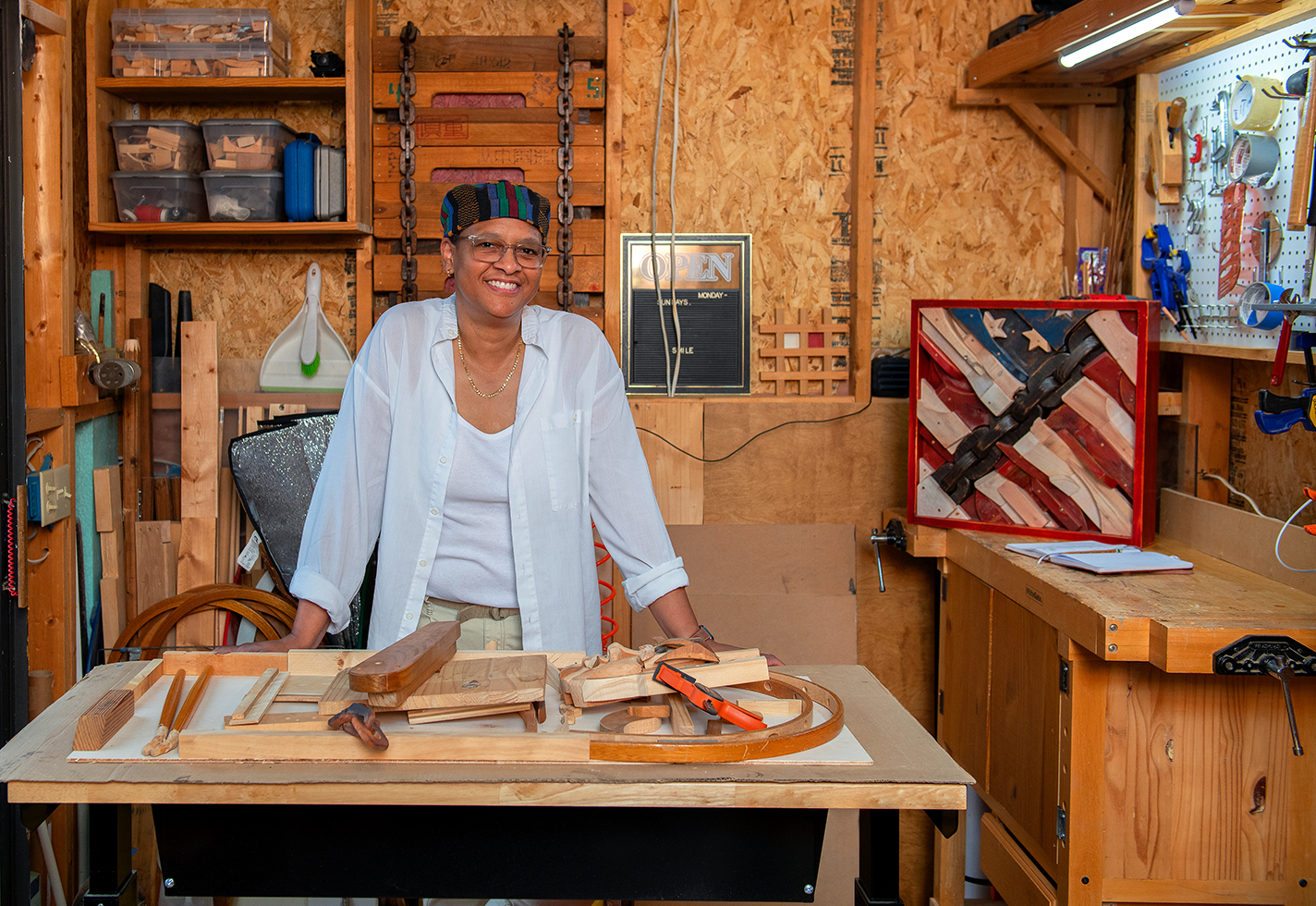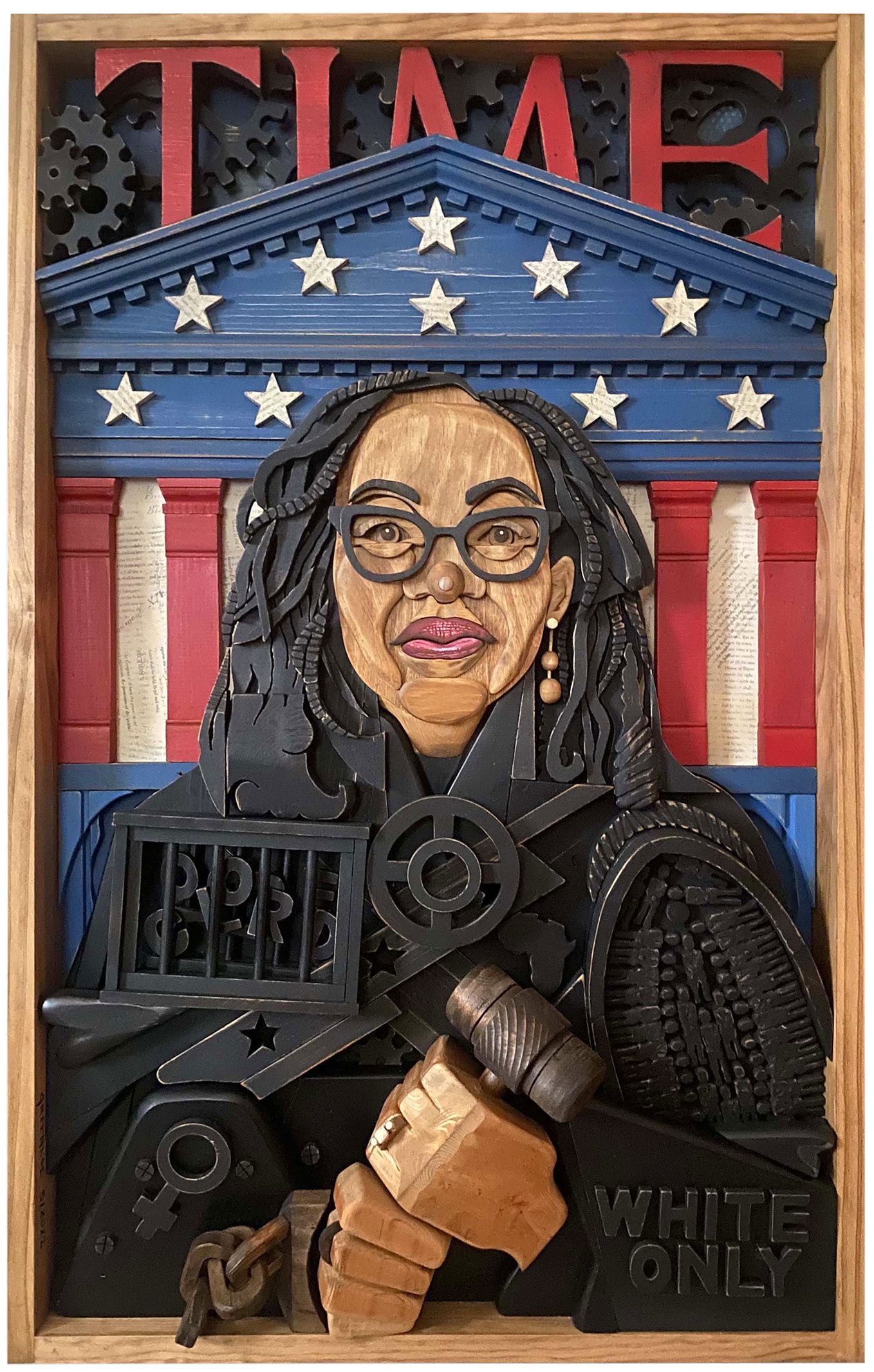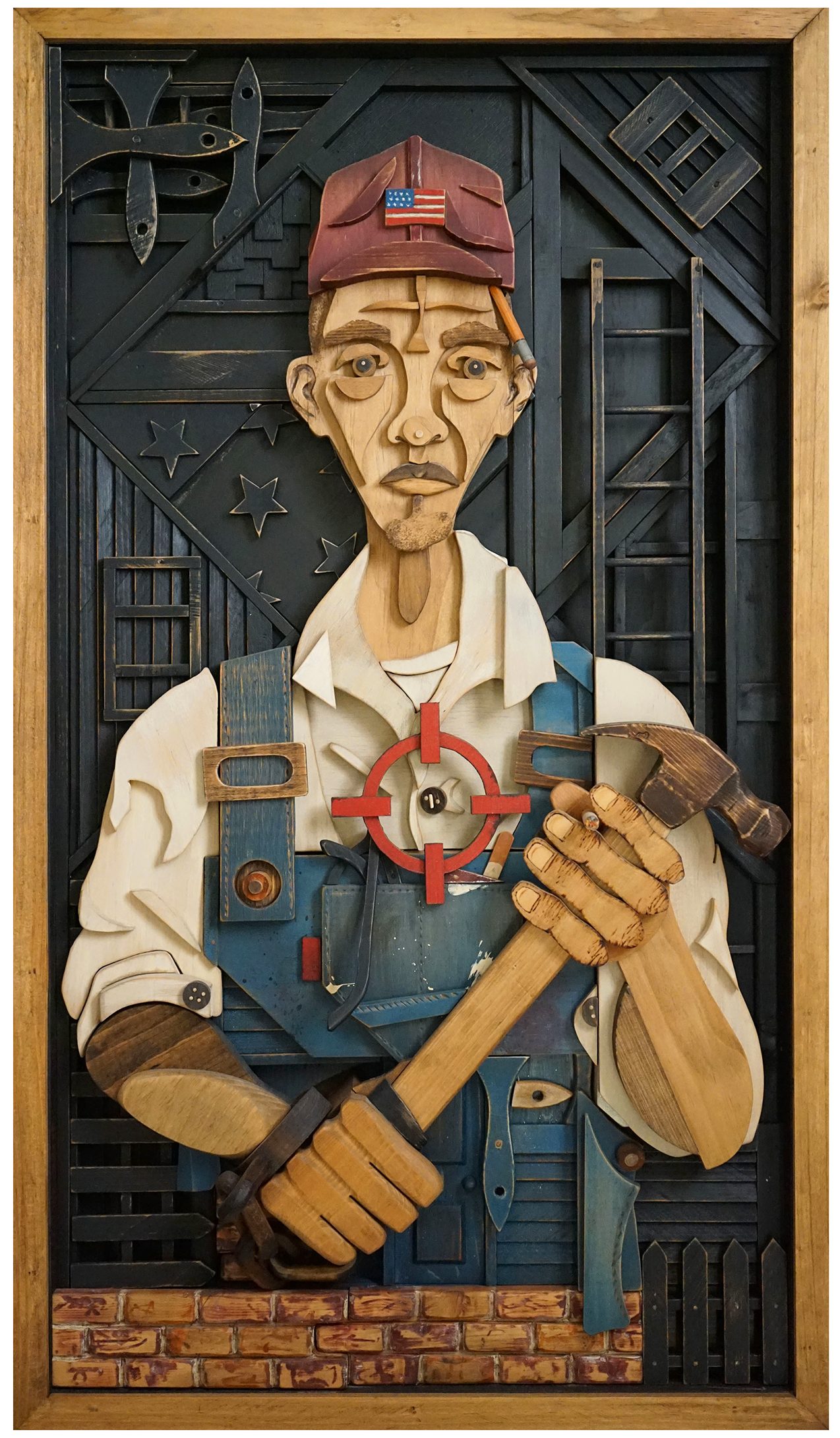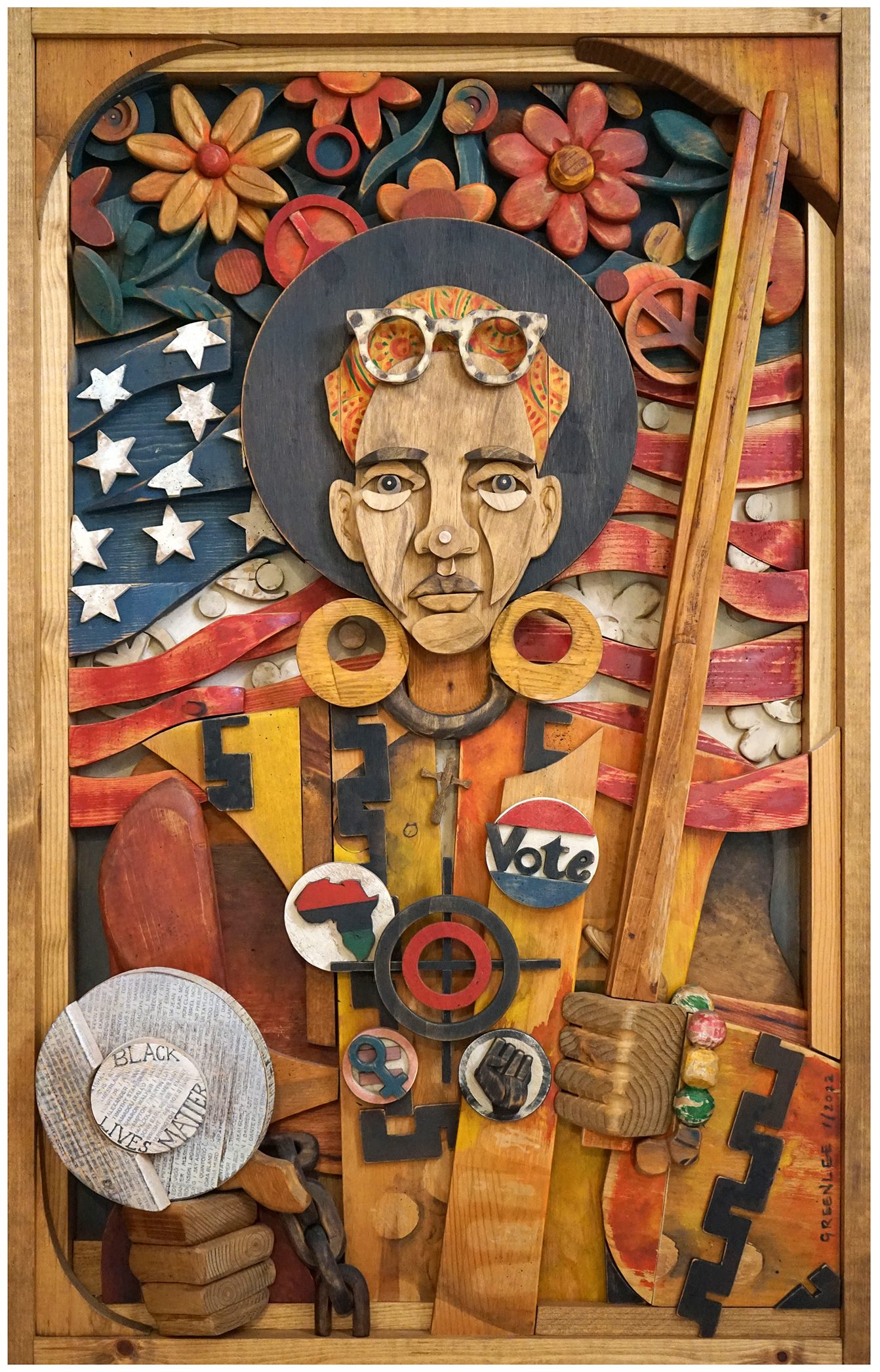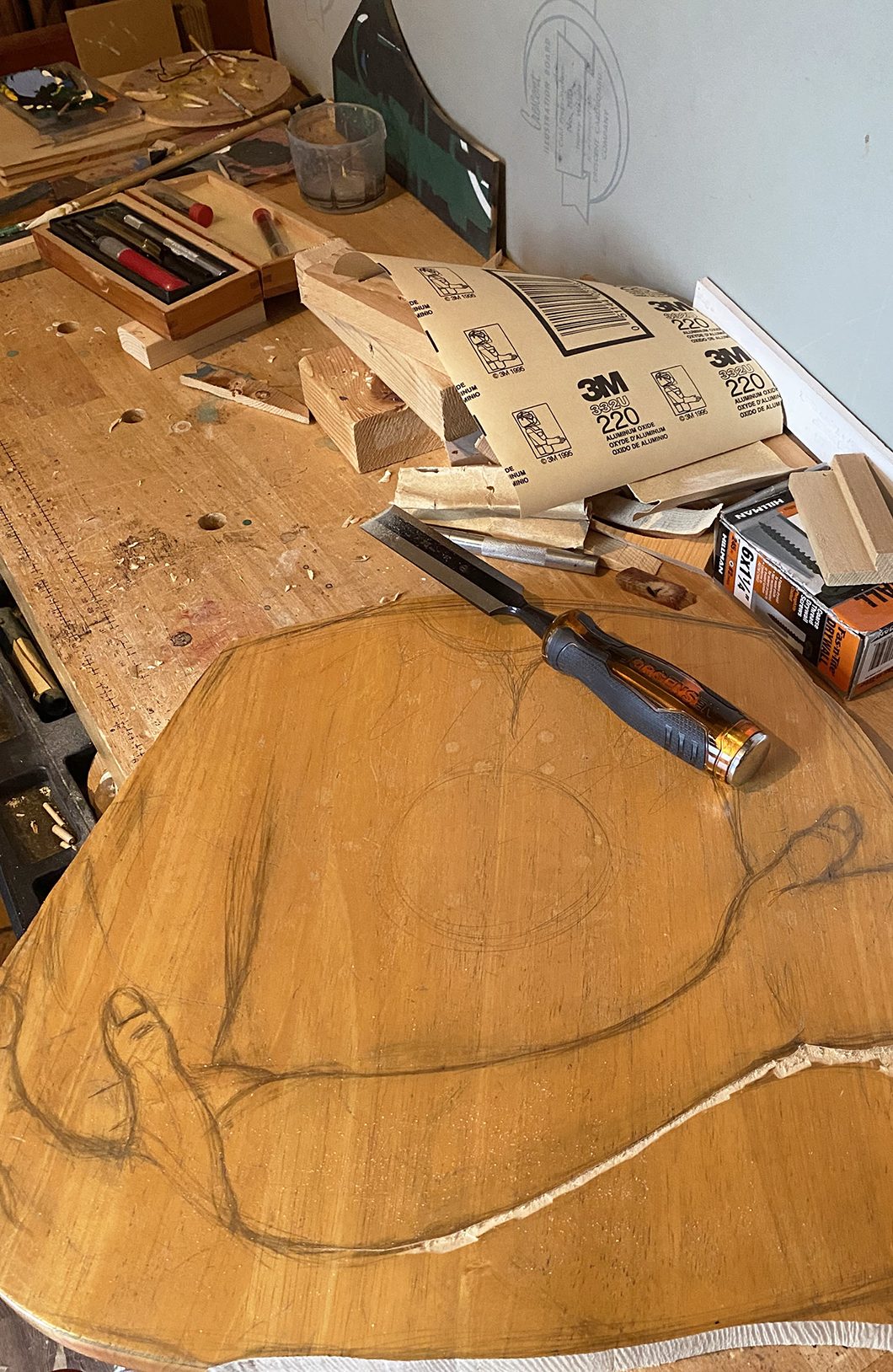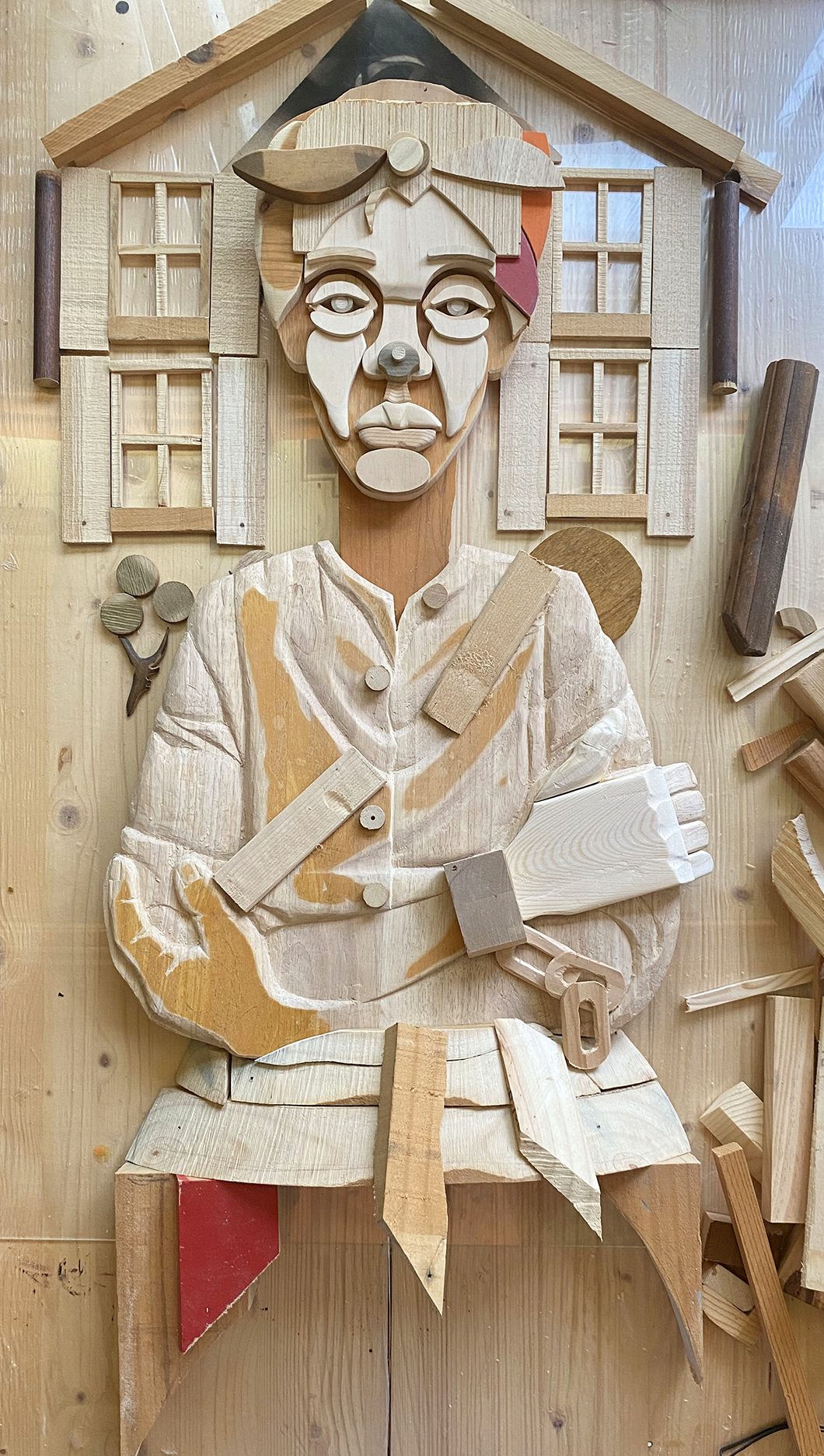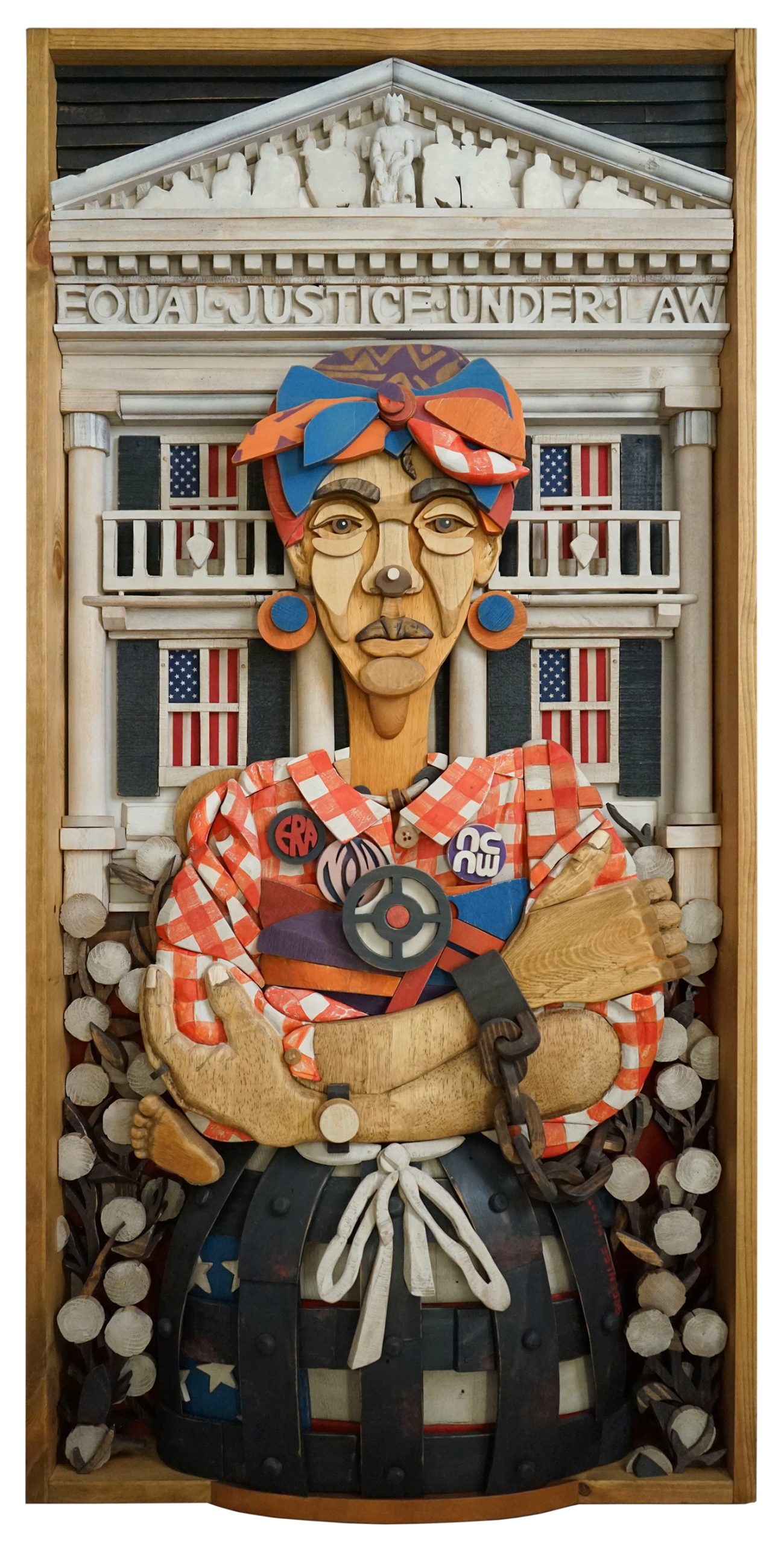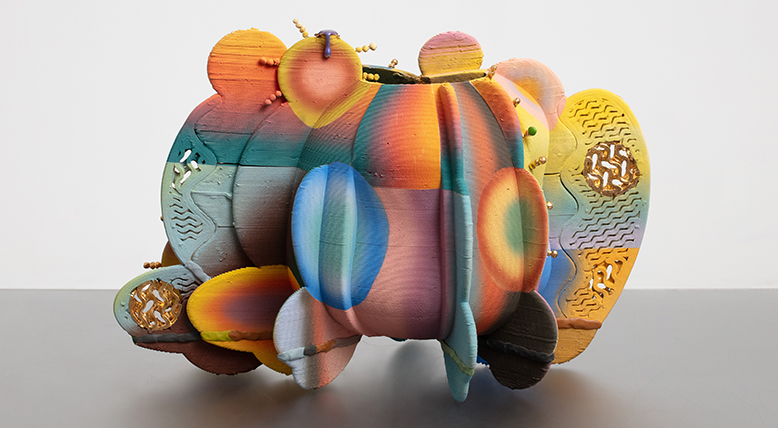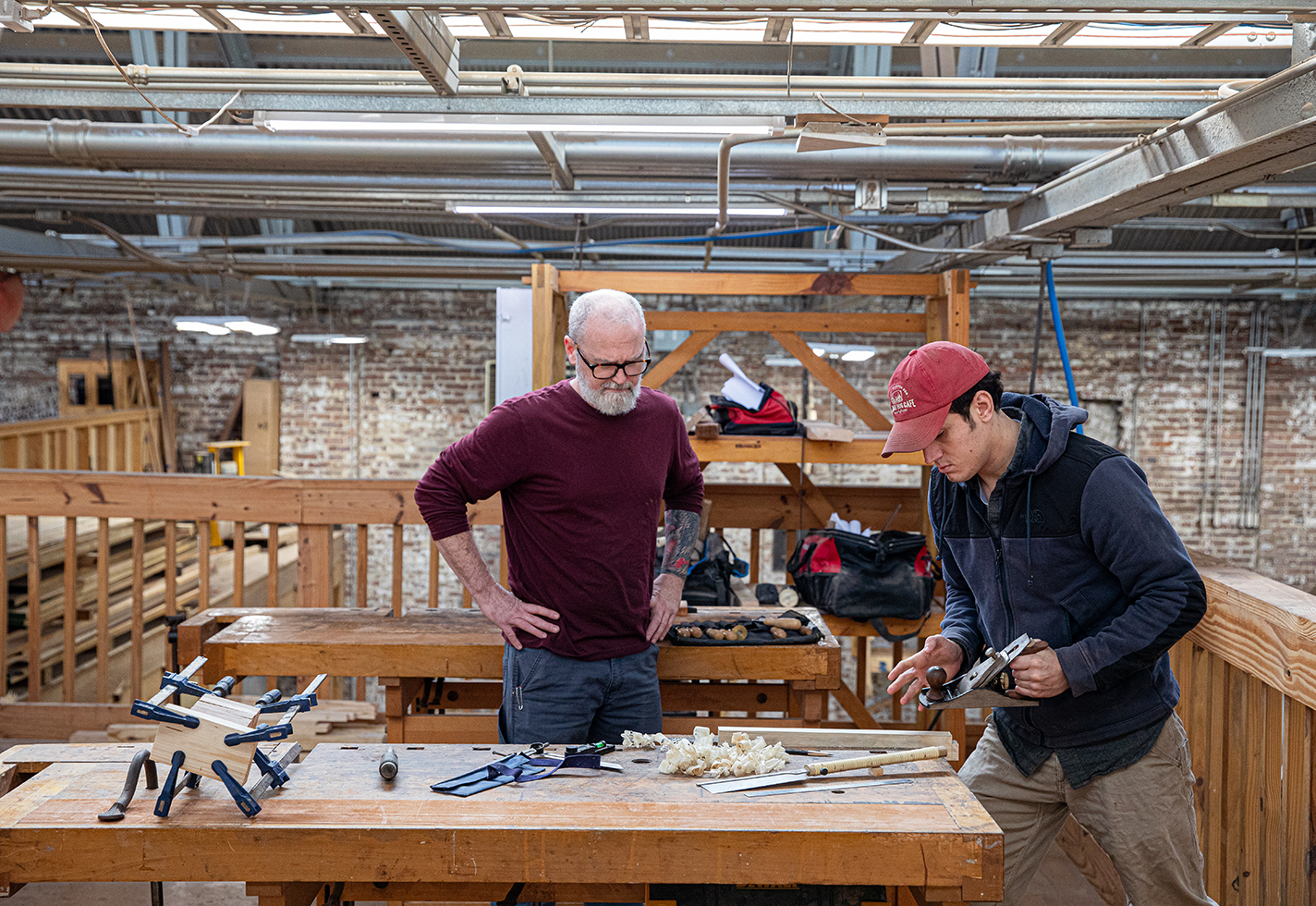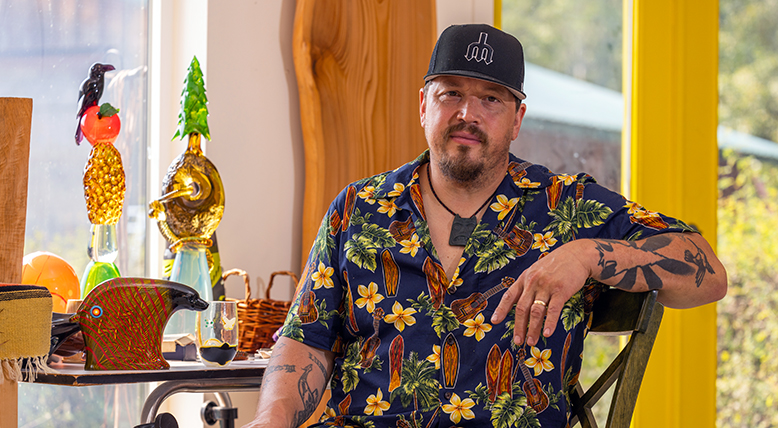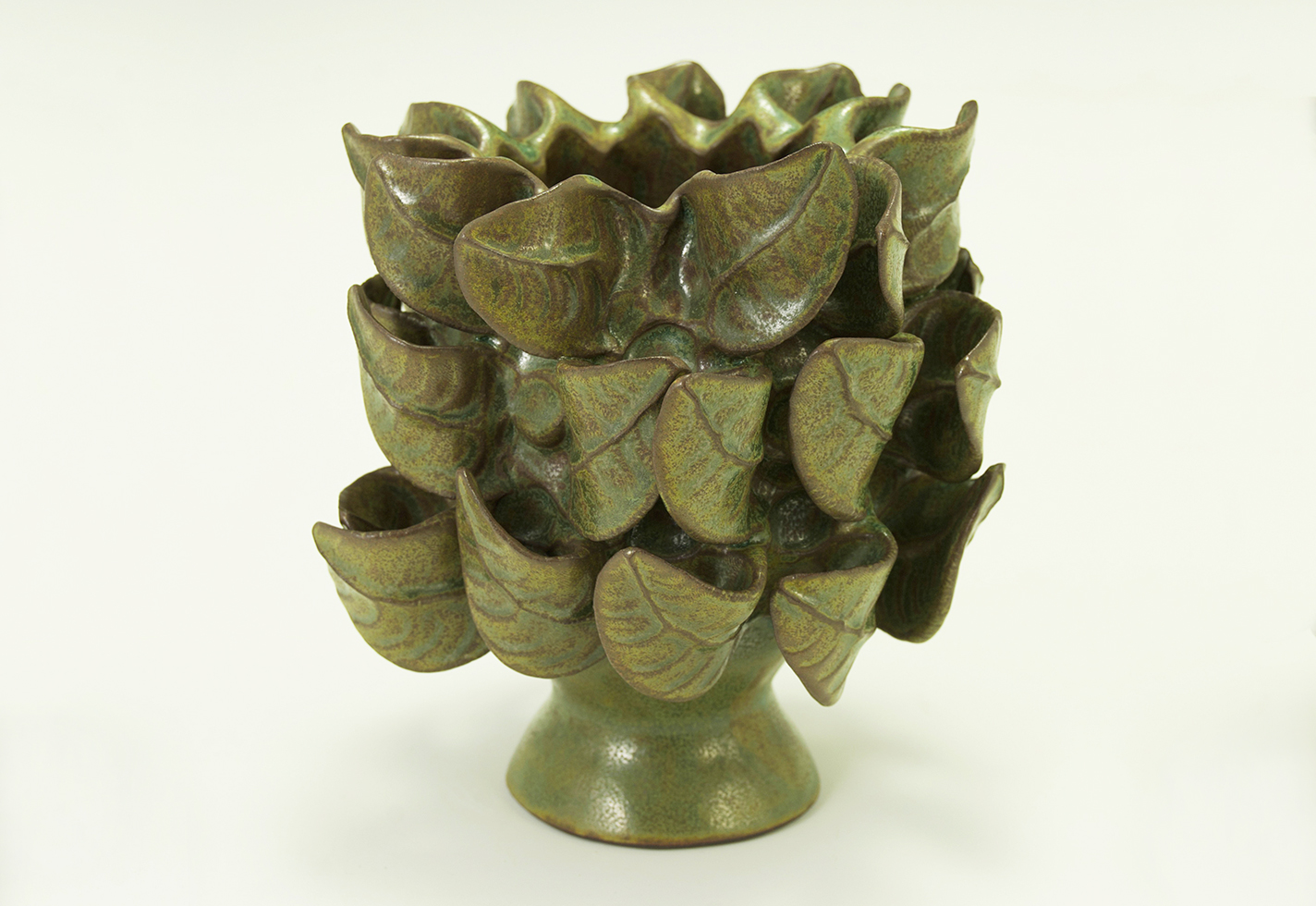After earning a BFA in drawing and painting from Clemson University, Greenlee turned to freelance textile design, one of the few creative roles available in the South. As a young mother, freelancing allowed her to work from home while still making art. As her son grew older, Greenlee began experimenting with wood, discovering a medium that offered the depth she had long sought.“I outgrew the two-dimensional nature of paper and canvas,” she says. “I wanted to create depth and dimension, work that couldn’t be printed.”
Greenlee’s wood collages are layered, textured, and deeply narrative, exploring themes of racial justice, Black cultural identity, and historical reckoning. “Growing up, the stories told in history classes didn’t reflect people who looked like me,” she says. “So my art is about creating that narrative.”
Her process is meticulous. She sources scrap wood, metal, and plexiglass from projects around her home, preferring older, denser materials that carry their own history. She carves individual wooden pieces with band saws and scroll saws, refining details with chisels and sanding tools. Finally, the layers are fixed together with wooden dowels for stability. From start to finish, each piece takes an average of 400 hours.
Greenlee’s Sign of the Times #Too (2022) showcases her use of repeated motifs to amplify her message. Circles in the activist’s Afro, earrings, buttons, and Black Lives Matter sign represent the cyclical nature of history (which, she notes, “you can definitely see happening right now”). The chain-link bracelet represents the enduring impact of slavery, while the bull’s-eye target on the woman’s chest symbolizes the racial bias the Black community endures.
For Greenlee, art isn’t about commercial success—it’s about storytelling and holding people’s attention long enough to make them think. “I want people to stop and really pay attention to what’s going on in my pieces,” she says. “If someone stops long enough, maybe they’ll think about what’s happening in the world.”
Now working part-time at the Clemson Area African American Museum, Greenlee finds herself in a space where she can engage her community in ways she couldn’t in the textile industry, where she was often the only Black person in the room.
As for what’s next, she’s considered large-scale public installations but is mindful of logistical challenges. “If I made them any bigger, I wouldn’t be able to move them,” she laughs. Instead, she envisions smaller, modular components that could come together to form a larger whole.
Greenlee’s work is a testament to patience, persistence, and the power of craft. And after decades of refining her voice, she’s exactly where she wants to be: creating art that speaks volumes, layered with history, depth, and truth.
Storyteller Anitra Budd is a Minneapolis-based consultant, speaker, copywriter, and editor.
